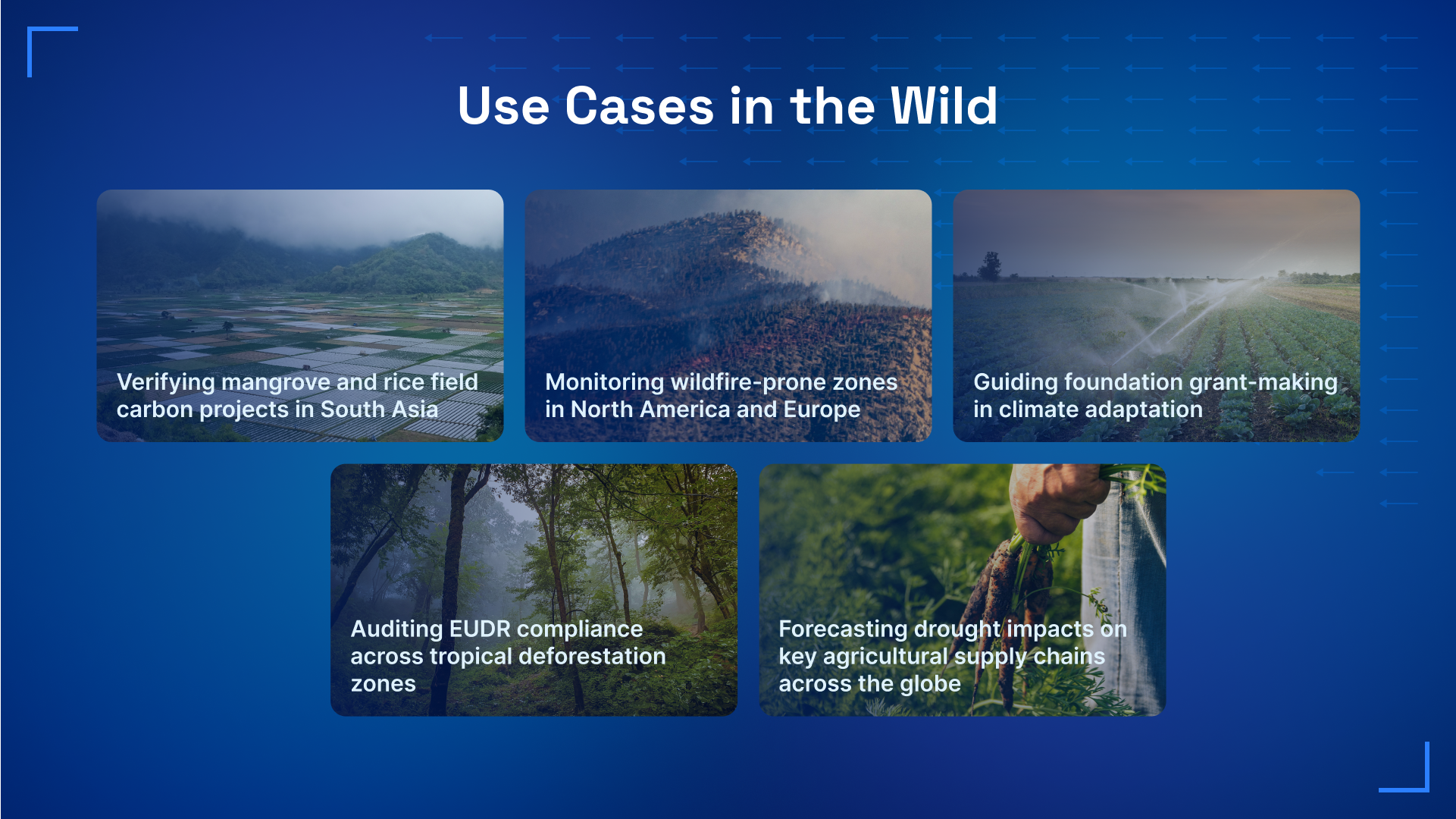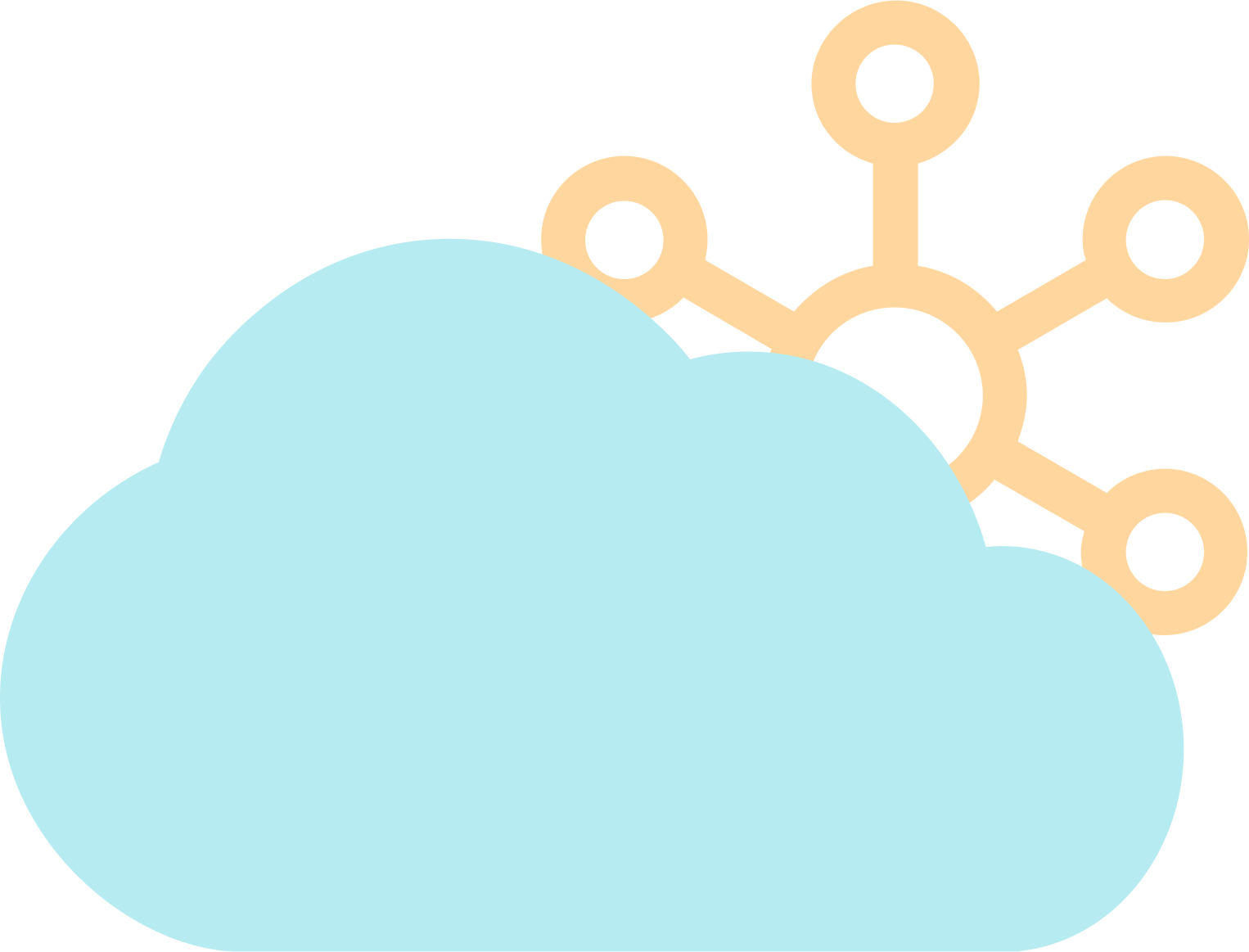Introducing EarthOS: The Planetary Digital Twin Powering Climate Resilience

Climate risk is no longer a hypothetical—it’s a daily force shaping global markets, food systems, infrastructure, and human lives. But despite the urgency, decision-makers across sectors still operate in a world where climate data is fragmented, outdated, and reactive.
That’s why we built EarthOS: the world’s first AI-powered digital twin of the planet designed for real-world action.
Built by scientists, technologists, and financial experts, EarthOS is the engine behind dClimate Labs, a new product ecosystem built to model, quantify, and manage nature and climate risk at global scale. This is more than a data platform. EarthOS is a dynamic, self-learning environmental infrastructure designed to transform how we respond to the climate crisis—by powering tools that work today and evolve for tomorrow.
What is EarthOS?
EarthOS is a planetary intelligence system. At its core, it’s a living, evolving digital twin of Earth—fueled by AI foundation models and fed by trillions of data points across climate, satellite imagery, land use, agriculture, and environmental indicators.
Unlike static datasets or narrow-use tools, EarthOS continuously learns from Earth itself.
Using self-supervised AI, EarthOS ingests streams of multi-sensor satellite data (optical, radar, thermal, LIDAR), remote sensing observations, and historical geospatial records to map and monitor the natural world with unprecedented accuracy. From canopy cover to methane flux to drought emergence, EarthOS models change as it happens, giving users not just a snapshot—but a storyline.
It is a modeling engine, a decision support system, and forms foundational data infrastructure—all in one.

Why It Matters
Most climate data tools were built for research, not action. They're slow to update, hard to scale, and built for narrow sectors. That’s not enough anymore.
EarthOS was built differently, guided by four core principles:
1. Precision at Scale
Our foundation models create consistent, validated outputs across the globe, supporting use cases from rainforest carbon to methane emissions from rice canopies. Whether you're operating in the Amazon basin, Southeast Asia or the Americas, EarthOS gives you the precision you need at the scale you demand.
2. Trust Through Transparency
All EarthOS outputs are explainable, objective, traceable, and backed by peer-reviewed science. We're not a black box. We believe trust is earned through openness, auditability, and reproducibility.
3. Interoperability
Built on modular APIs and open standards, EarthOS is designed to plug into existing tools and workflows, including carbon registries, GIS platforms, and insurance underwriting and ESG dashboards.
4. A Living Model
As more data is collected—from satellite sensors, IoT, field teams, partners—EarthOS improves. It doesn't go stale. It evolves, adapting to shifting baselines and new variables in near real time.
What Can EarthOS Do?
EarthOS is the operating system behind three core dClimate Labs products, each targeting a critical vector of planetary risk:

CYCLOPS
Digital MRV for Natural Capital
CYCLOPS uses EarthOS to support project developers, sustainability teams, and investors through every phase of nature-based project development—from sourcing and (pre-)feasibility to credit issuance, monitoring, and compliance.
Supports methodologies including:
- Reforestation & afforestation
- Wetlands
- Mangroves & seagrass
- Improved forest management
- Regenerative agriculture
- Agricultural methane (e.g. rice)
CYCLOPS is already powering next-gen credit issuances, with performance analytics, risk alerts, and dynamic baselining—all in a single platform.
Aegis
Climate-Risk Engine for Agriculture and Infrastructure
Built for asset managers, corporates, and reinsurers, Aegis uses EarthOS to quantify exposure to drought, flood, wildfire, and yield volatility—across both physical assets and commodities. Use cases include:
- Agricultural underwriting
- Climate-adjusted asset valuation
- Portfolio-wide scenario analysis
- EUDR and compliance stress testing
Siren
Real-Time Alerts for Environmental Disruption
Powered by EarthOS's near-real-time anomaly detection models, Siren delivers early warnings for supply chain risk, power grid disruption, crop failure, and more—across geographies and sectors.
How the EarthOS Digital Twin Works
EarthOS is not a dashboard—it’s a foundational scientific and technical architecture designed to mirror the complexity of Earth itself.
At its core is a self-supervised learning framework, developed by our team - led by our CSO Dr. Clement Atzberger - which enables the platform to detect environmental change without human labeling.
EarthOS uses:
- High revisit satellite time series with scientific-grade instruments
- Biophysical model integration (e.g., radiative transfer & eco-physiological models)
- Domain adaptation to local environments
- Multi-sensor fusion to improve resolution and reliability
This architecture allows EarthOS to generate environmental intelligence across the entire lifecycle of a project, asset, or commodity—measuring impact, predicting risk, and validating results.
Use Cases in the Wild
EarthOS is already being deployed in mission-critical contexts:
- Verifying mangrove and rice field carbon projects in South Asia
- Monitoring wildfire-prone zones in North America and Europe
- Forecasting drought impacts on key agricultural supply chains across the globe
- Auditing EUDR compliance across tropical deforestation zones
- Guiding foundation grant-making in climate adaptation
Every use case has a unique output—but they all start with the same foundation: trustworthy infrastructure.

Unmatched Accuracy with Built-In Uncertainty Quantification
What truly sets EarthOS apart is not just the precision of its predictions, but its ability to quantify how confident it is in those predictions. Each model output from EarthOS includes an uncertainty score—providing users with a transparent, probabilistic understanding of reliability, rather than a single deterministic value.
This is a major leap forward from many existing platforms that offer static, unvalidated outputs or rely on questionable modeling assumptions. Built on billions of historical and near real-time observations from satellites, IoT/sensors, and climate models, EarthOS's foundation models are continuously refined to minimize error margins and maximize spatial consistency.
In peer-review scientific publications and internal benchmarks, EarthOS has outperformed conventional remote sensing and carbon MRV tools across key metrics—offering higher resolution, better temporal coherence, and the ability to maintain predictive accuracy even in data-sparse regions. This level of model integrity and transparency is essential for financial-grade climate applications—and it’s built into EarthOS by design.
The Team Behind EarthOS
EarthOS was developed by a global team of Earth scientists, engineers, economists, and remote sensing experts.

- Dr. Clement Atzberger, Chief Scientist of dClimate Labs and architect of EarthOS, is one of the world’s most innovative remote sensing experts with over 30 years of experience in machine learning and environmental modeling. He’s a Cambridge Fellow and former university professor.
- Jon Pierre, CEO of dClimate Labs, is a former commodity trader and satellite analytics leader, with a track record in building data-driven solutions for climate and finance.
Backed by a team of PhDs, modelers, and data scientists from top institutions and companies across the climate-tech space.
A Vision for Planetary Infrastructure
The long-term goal? To create a public-good layer of digital infrastructure for the planet—one that powers commercial tools, academic research, policy decisions, and innovation.
EarthOS is not just for carbon markets. It’s for climate investors, regulators, insurers, developers, researchers, and risk managers—anyone working on the frontlines of climate resilience.
We believe that resilient societies require resilient data. EarthOS is our way of delivering it—open, intelligent, and constantly improving.
What’s Next?
Over the coming months, we’ll be rolling out:
- Open EarthOS APIs for selected partners
- White papers and scientific publications on the foundation model methodology
- Expanded asset coverage in Aegis
- New modules for methane quantification
- Innovative approaches for biodiversity tracking
- Public dashboards powered by EarthOS
Join the Mission
Whether you're a developer trying to validate your impact, an insurer modeling catastrophe losses, or a policymaker looking to understand exposure—EarthOS gives you the tools to act, not just observe.
EarthOS is the infrastructure layer for a climate-resilient future. Let’s build it together.

